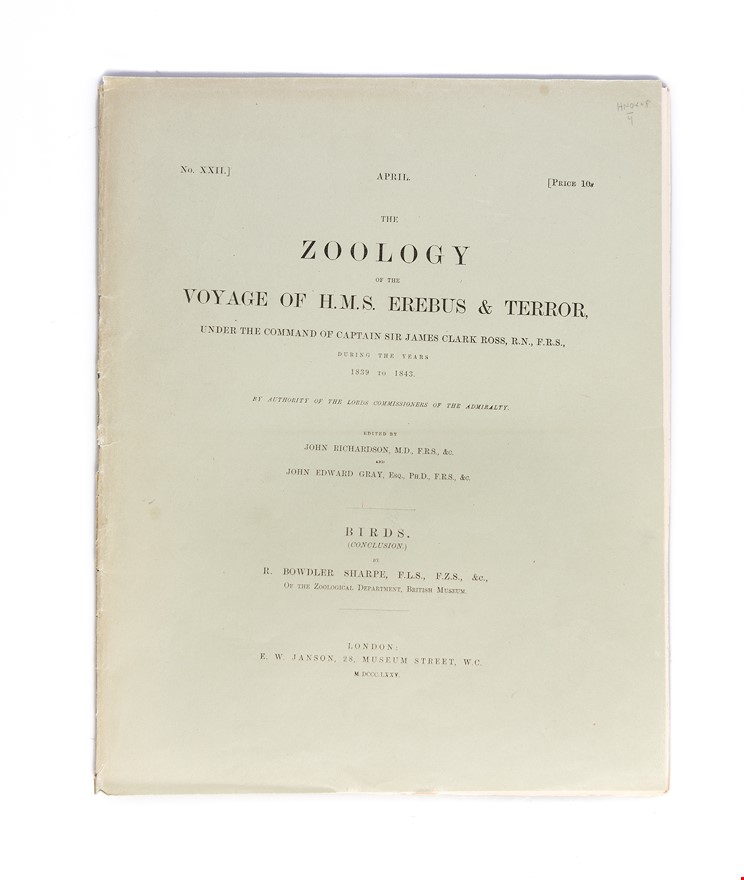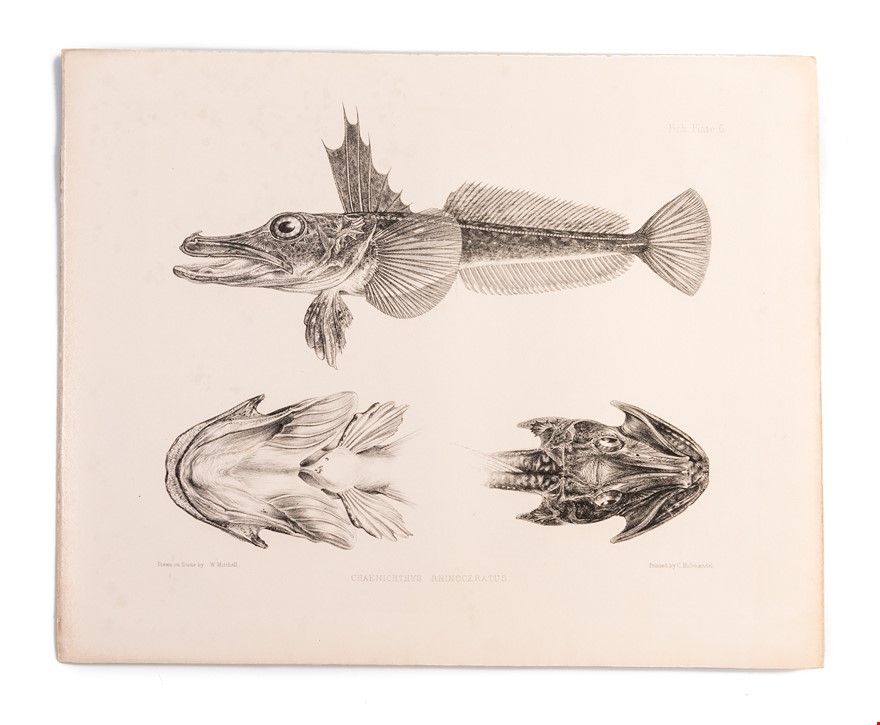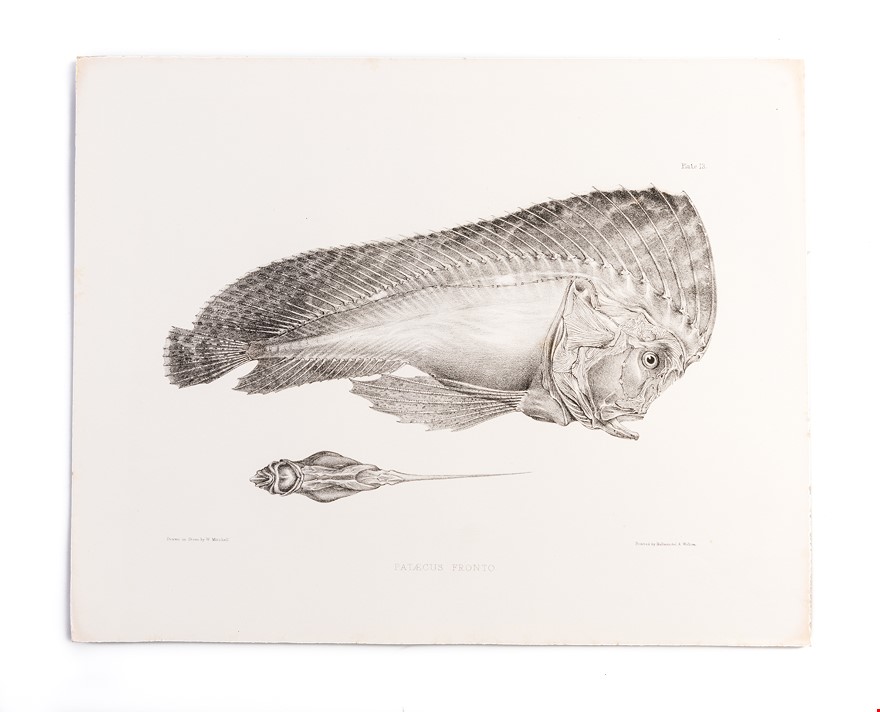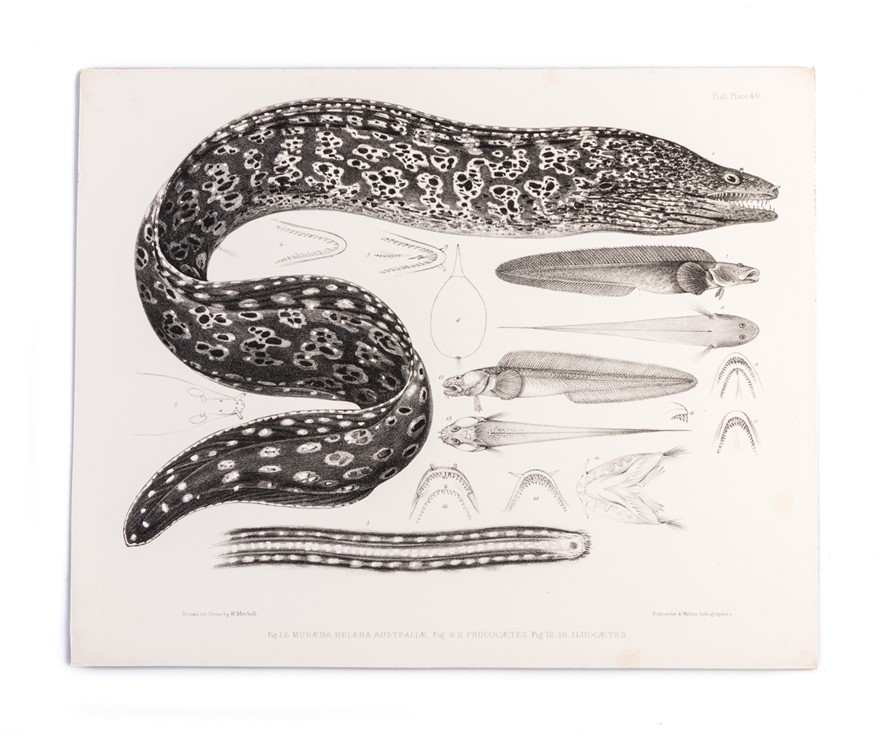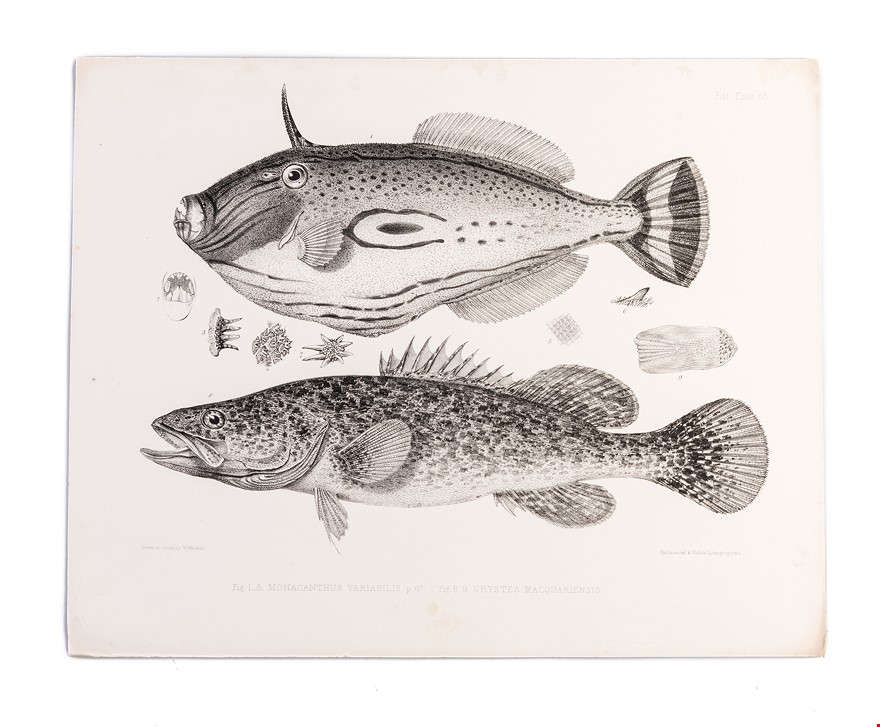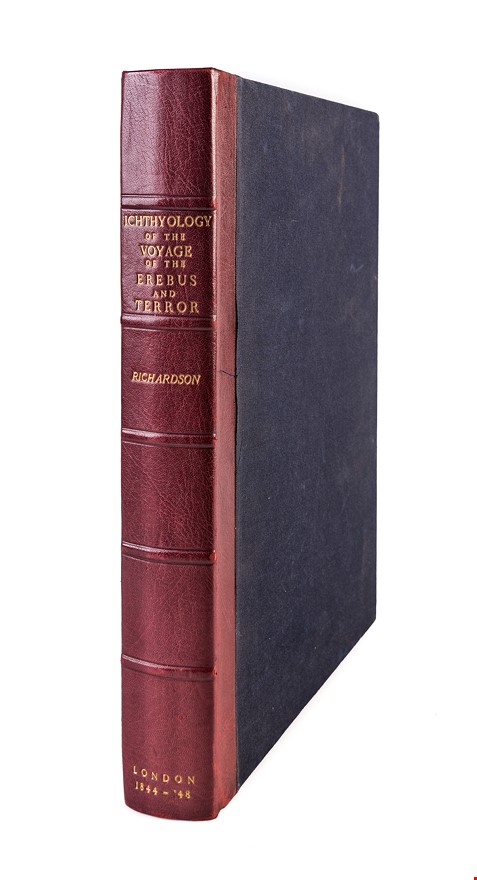Ichthyology of the Voyage of H.M.S. Erebus & Terror,
RICHARDSON John; GRAY John Edward (1874.)
£3500.00
Please contact us in advance if you would like to view this book at our Curzon Street shop.
under the Command of Captain Sir James Clark Ross, R.N., F.R.S. [With] The Zoology of the Voyages of H.M.S. Erebus & Terror... Crustacea. Printed in double columns, 60 lithographic plates & 4 lithographic plates. 4to. Ichthyology as issued, Crustacea stitched, both laid into original printed wrappers (the wrappers of Crustacea are those of an ornithology part). Spine perished on Ichthyology volume, light edge wear. viii, 139; [2], 5, [1]pp. London, 1844-48 &
The 1839-42 expedition of the Erebus and Terror to the Antarctic under James Clark Ross was one of the first major Antarctic expeditions, and according to Hill, one of the most important of all Pacific voyages. These two publications form a part of the scientific and natural history component of the voyage, among the most important and desirable for any Antarctic collection. They bear a relation to Ross’ own narrative similar to that of the zoology volume of Beechey’s narrative, also edited by the veteran high latitude zoologist, Sir John Richardson.
John Clark Ross, commander of this expedition, was the nephew of Rear Admiral Sir John Ross, and one of the most experienced polar explorers produced by England in this period. Beginning with Parry in 1819, he participated in most of the major British high Arctic expeditions over the next two decades. He was thus a natural choice, and in April 1839 he was appointed commander of an expedition fitted out for magnetic and geographical discovery in the Antarctic, aboard the Erebus and Terror, which sailed from England in September 1839. The party crossed the Antarctic Circle on Jan. 1, 1841 and discovered a long range of high land which Ross named Victoria, a volcano which he named Mount Erebus, and a range of ice cliffs which to all appearances permanently barred the way to any closer approach to the pole. The expedition was also able to determine the South Magnetic Pole, and for this discovery Ross was awarded the gold medal of the Geographical Societies of London and Paris in 1842. The expedition penetrated as far south as 78° South, seven degrees farther than Cook and four degrees farther than Weddell, and provided the first detailed look at the coast of the Antarctic continent. They went on to visit Tasmania, New Zealand, and the Cape of Good Hope before returning to England in 1842.
The present volumes represent a portion of the scientific findings gleaned from this expedition dealing with marine life. They include all of the ichthyology and crustacea parts, making them complete in and of themselves. The text of the Ichthyology volume is by John Richardson and describes fish specimens gathered from Australia, New Zealand, Cape Horn, the Falklands, and “wherever an opportunity offered of drawing the seine or trawl, or dropping a hook.” Richardson was Great Britain’s leading authority on fishes and “this report is distinguished as one of the most important zoological studies from the classical era of Antarctic exploration” (Rosove). The sixty handsome lithographed plates illustrate all manner of fish in beautiful detail, and include several rare specimens. The report on Crustacea is contained in the concluding supplement to the section on birds. The plates were produced a number of years before the text, and therefore the nomenclatures are not always in agreement.
Because the entire work was produced over a thirty-year period by a variety of hands, complete sets are almost impossible to find. According to Sabin, the two complete volumes or reports, of which these are a part, were originally “published in twenty-four parts at ten shillings each, the first eighteen of which appeared in 1844-48, and the last six in 1874-75... Complete sets are rare”. In fact, any parts of the natural history findings of the Ross Antarctic expedition are quite rare on the market.
Sabin, 71032; Hocken, p117; Spence, 971; Nissen (Zoology), 3386; Wood, pp536-7; Rosove, 270-8, 270-9. 193111
Stock Code: 193111
